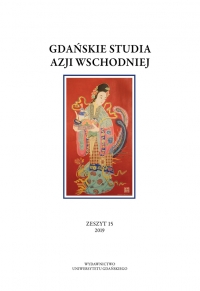Tradycyjne i współczesne miejsce kimona w kulturze i społeczeństwie japońskim
Abstrakt
The modern kimono might look similar to its historical predecessor, but it has, in fact, gone through a vast array of changes. When Japan opened up to Western culture during the Meiji period, the need to distinguish the ‘ours’ from the ‘foreign’ started a process that turned the kimono into the easily recognizable symbol of ‘Japaneseness’ that it is today. Because of its long history and cultural significance, the importance of this traditional item of dress cannot be understated. Several centuries-old forms of craftsmanship are tied nowadays to its continued existence. In this article, I delve into some of the kimono’s rich history and the changes it went through both as a piece of clothing and an important element of contemporary Japan’s cultural heritage. I also address some of the criticism that has been directed at it through the ages, as well as speculate about its plausible future as a fashion item.

 Uniwersyteckie Czasopisma Naukowe
Uniwersyteckie Czasopisma Naukowe





